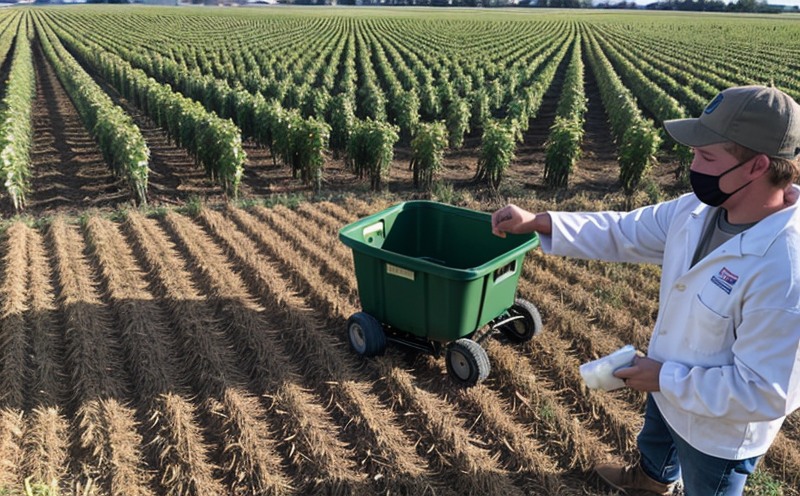Milling Quality Testing in Rice/Wheat
In agricultural and forestry testing, post-harvest quality testing is critical to ensuring that grains like rice and wheat meet specific milling standards. This service focuses on the detailed analysis of rice and wheat samples to ensure they are fit for milling. The process involves a series of tests aimed at evaluating key parameters such as grain hardness, amylose content, starch pasting properties, water absorption capacity, and more.
Rice and wheat are two of the most important cereal grains in the world, contributing significantly to global food security. Their quality directly impacts milling efficiency and product yield. By conducting thorough milling quality testing, we help ensure that these grains meet the highest standards for processing into flour or other products. This service is essential for quality managers, compliance officers, R&D engineers, and procurement teams who need reliable data on grain characteristics to optimize production processes.
The first step in this process involves meticulous sample preparation, which includes cleaning, drying, and conditioning the grains. This ensures that each specimen accurately represents the batch being tested. After preparation, various tests are conducted using advanced analytical instruments like near-infrared spectrometers (NIRS) for amylose content determination, viscometers for measuring pasting properties, and hydration meters to assess water absorption capacity.
One of the critical aspects is determining the milling quality index, which evaluates how well a grain can be milled into flour. This involves assessing factors such as breakage, cuttings, and yield during simulated milling operations. The goal is to achieve optimal flour quality with minimal loss in nutrient content.
Another important parameter is amylopectin content, which influences the dough strength and texture of baked goods derived from the grain. Understanding this helps manufacturers tailor their recipes and processing methods for better outcomes. Additionally, the starch pasting properties provide insights into how well the grain will perform in different culinary applications.
Water absorption capacity is crucial because it affects both milling efficiency and final product quality. Grains with higher water absorption can lead to more efficient milling but also require careful handling to prevent over-hydration and spoilage. This parameter helps millers manage their resources effectively while maintaining product integrity.
The results of these tests are compiled into comprehensive reports that provide detailed insights into the milling quality of rice and wheat samples. These reports serve as valuable tools for decision-making in agricultural practices, production processes, and market positioning strategies. By leveraging this data, stakeholders can enhance crop yields, improve processing efficiency, and ensure consistent product quality.
Applied Standards
- ISO 6580:2017 - Methods of Testing Rice for Milling Quality
- ASTM D4523-19 - Standard Test Method for Determination of Starch Content in Wheat Flour by Near-Infrared Spectroscopy (NIRS)
- EN 12806:2017 - Methods for the Determination of Water Absorption Capacity of Cereals
Industry Applications
| Application Area | Description |
|---|---|
| Rice Milling Industry | Optimizing milling processes to maximize flour yield and quality. |
| Fine Flour Production | Evaluating wheat quality for producing premium flours suitable for baking. |
| Cereal Processing | Assuring consistent product quality across different cereal-based food products. |
| Agricultural Research | Studying how genetic modifications affect milling performance of grains. |
International Acceptance and Recognition
The tests conducted under this service are widely recognized and accepted by international standards bodies. Compliance with these standards is crucial for ensuring that products meet global quality benchmarks, thereby facilitating trade across borders.
Rice and wheat mills worldwide rely on consistent testing protocols to ensure uniformity in product quality. By adhering to internationally accepted methods such as ISO 6580 and ASTM D4523, our laboratory provides credible results that are trusted by buyers and sellers alike. This enhances credibility and trust within the global agricultural community.
The recognition of these tests extends beyond mere compliance; they also contribute significantly to food safety standards and sustainability initiatives. Ensuring that grains meet rigorous milling quality criteria not only supports economic growth but also contributes positively towards environmental conservation efforts by reducing waste and optimizing resource use.





